View in other NatureServe Network Field Guides
NatureServe
Montana
Utah
Wyoming
Idaho
Wisconsin
British Columbia
South Carolina
Yukon
California
New York
Pacific Spiketail - Zoraena dorsalis
Other Names:
Cordulegaster dorsalis
Native Species
Global Rank:
G5
State Rank:
S4
(see State Rank Reason below)
Agency Status
USFWS:
USFS:
BLM:
External Links
State Rank Reason (see State Rank above)
Apparently secure, though it may be rarer in parts of the state with intensive silviculture.
General Description
This is a large vividly-marked, black and yellow dragonfly with long abdomen, the eyes are smallish and barely touching. They are strong flyers and when perched often hang at a 45° angle. The female has a spikelike ovipositor. This species inhabits lotic systems in western Montana (small woodland streams and rivers). There is only 1 genus and 1 species of this family of dragonflies in NorthWestern North America.
Diagnostic Characteristics
Only drangonfly in western Montana with black abdomen and yellow spots.
Species Range
Montana Range
Range Descriptions
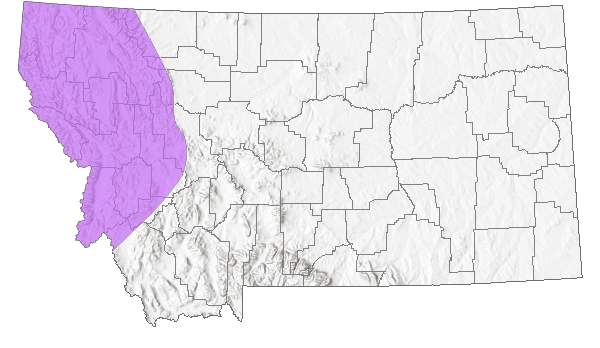
 Native
Native
Range Comments
Swan River Valley (Lake County, into the Yaak watershed and Blue Joint Warm Spring (Ravalli County) (Miller and Gustafson 1996).
Observations in Montana Natural Heritage Program Database
Number of Observations: 38
(Click on the following maps and charts to see full sized version)
Map Help and Descriptions
Relative Density
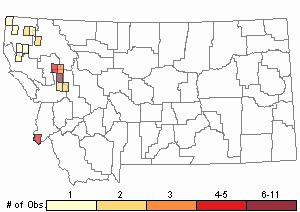
Recency
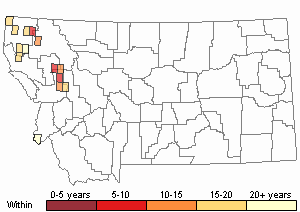

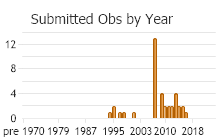
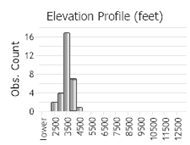 (Observations spanning multiple months or years are excluded from time charts)
(Observations spanning multiple months or years are excluded from time charts)
Habitat
The habitat of the Pacific Spiketail is clear, shady foothill and mountains streams with either sand or mud substrate and steady current. Away from water this species tends to forage along forest openings and clearings or brushy ravines. Pacific Spiketails often perch on trees and small branches of shrubs for lengthy periods of time (Dunkle 2000, Paulson 2009).
National Vegetation Classification System Groups Associated with this Species
Wetland and Riparian
Riparian and Wetland Forest
Riparian Shrubland
Food Habits
Larvae feed on a wide variety of aquatic insects, such as mosquito larvae, other aquatic fly larvae, mayfly larvae, and freshwater shrimp.
Adult- This damselfly will eat almost any soft-bodied flying insect including mosquitoes, flies, small moths, mayflies, and flying ants or termites.
Reproductive Characteristics
Male Pacific Spiketails patrol very long stretches of streams in low, steady flights usually turning around when encountering an obstacle or open pond. They will often return to same perch repeatedly. Females usually avoid breeding sites until time for egg laying as patrolling males will harass them. Oviposition is completed in shallow water along stream edges driving eggs into the substrate with vertical thrusts (Dunkle 2000, Paulson 2009).
Management
Intact forested riparian areas are essential for this species along it's river corridor
Stewardship Responsibility
Threats or Limiting Factors
Threats to this species would be clearcutting riparian forests along the corridors of the streams they inhabit.
References
- Literature Cited AboveLegend:
 View Online Publication
View Online Publication Dunkle, S.W. 2000. Dragonflies through binoculars: A field guide to dragonflies of North America. New York, NY. Oxford University Press. 266 pp.
Dunkle, S.W. 2000. Dragonflies through binoculars: A field guide to dragonflies of North America. New York, NY. Oxford University Press. 266 pp. Miller, K.B. and D.L. Gustafson. 1996. Distribution records of the Odonata of Montana. Bulletin of American Odonatology 3(4):75-88.
Miller, K.B. and D.L. Gustafson. 1996. Distribution records of the Odonata of Montana. Bulletin of American Odonatology 3(4):75-88. Paulson, D.R. 2009. Dragonflies and Damselflies of the West. Princeton University Press, Princeton. 535 pp.
Paulson, D.R. 2009. Dragonflies and Damselflies of the West. Princeton University Press, Princeton. 535 pp.
- Web Search Engines for Articles on "Pacific Spiketail"
- Additional Sources of Information Related to "Insects"





